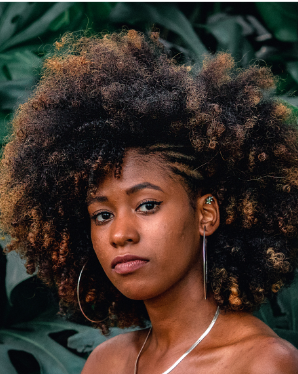The Cut – Dry OR Wet Afro Hair Cuts

Contributor: Ebuni Ajiduah (@ebuniajiduah)
Social media has been one of the best and worst things for the natural hair movement. It’s brought people all over the globe together to share the joys of our hair and helped people choose hairstyles, virtually test hair products based on reviews, and locate the best hairdressers far and wide. However with the boom in content, confusion quickly followed. It can be hard to keep up with all the terminology and methods but in this post I hope to clarify a few things!
In 2019, blogger Freddie Harrel showed through video footage of her experiences that most UK salons don’t cater to afro hair. This imbalance still largely exists today but there’s been a rise in the number of non-afro hair stylists establishing themselves in the curly hair scene, especially when it comes to cutting. So what are some of the curly hair cutting methods and how well do these work on afro hair?
DevaCut, Rezo Cut, Ouidad Cut and Curl-by-Curl are some of the popular cutting methods. They all work on the premise of cutting the hair in a wash-and-go state, focusing more on the placement of each individual curl. These work best for hair that is highly defined as you are required to arrive at the salon with little to no product post-wash, which sounds like a nightmare for kinkier afro hair. Stylists are flocking to learn the techniques and become accredited and while there’s merit to learning specifically about curly hair types, these often exclude kinkier hair so the ‘results may vary’ caveat is often included.
One question that is commonly asked is if cutting afro hair while wet is better than cutting when the hair is dry. Scientifically there is no benefit to cutting hair wet or dry - it’s all about the final outcome. Cutting hair wet allows for easier manipulation and accuracy. The hair can be pulled taut for blunt shapes and can also be dried post-cut to give a totally new style. Once dry, refinements can be made, e.g. cutting fringes or removing weight from certain areas, as the stylist can see how the hair “sits”.
We also can’t forget that afro hair is prone to shrinkage so cutting hair wet can prove a challenge as it’s harder to see the final style immediately. Blow-dried hair has thus become the standard for afro hair cuts. Although this makes for very precise cuts and provides visibility of damaged ends, it can also cause problems if not done correctly. The natural style (and shrinkage) may not be accounted for when the hair is blown out pre-cut so the refined shape may have bulky or wedged areas that look ‘wrong’ when worn in kinky form.
Another area of confusion is what should be used to cut afro hair. Dry cuts are usually done with clippers and tools for refinement. This applies both to barbering shorter hair and to longer hair where the stylist is working on an existing style. Thinning scissors are rarely used on afro hair because they can have the opposite effect, creating unsightly shorter layers that stick out and resemble breakage. Razors also have a similar effect, creating wispy ends. Regular scissors are often sufficient and can be used to cut the hair blunt (straight across) or point (into the hair) to give the required look.
Many people shy away from getting regular cuts due to scissor-happy stylists or concerns that cuts may hamper their length goals. Others believe that cutting will accelerate hair growth. The reality is that cutting your hair will:
- Remove single-strand knots and ends that have been damaged by heat, tools and general wear and tear;
- Not make your hair grow but aid in length retention because it reduces the chance of breakage from damaged ends;
- Give you the chance to change your style, adding the appearance of fullness or length, or framing your face.
Cuts are an essential part of a healthy hair regimen and usually the longer you leave between cuts the more hair has to come off. If your hair is in a particular style such as a tapered cut, you’ll need to get a cut as often as every 2-6 weeks to maintain it. However for general up-keep, a regular trim can be stretched to every 2-3 months. It’s always a good idea to talk to your stylist beforehand and find out about their methods to make sure you’re comfortable.
Book a cut on NinjA'fro by clicking on "Book Services > Cuts".
